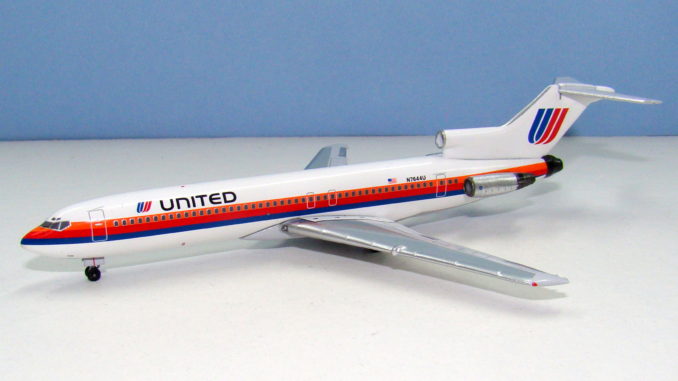
The Boeing 727 was for many years the most successful jet airliner ever made and the first to reach 1,000 units. It provided the backbone of the fleets of every major US trunk airline from about 1970 until well into the 1990s. As such it has been reasonably well covered in 1:400 scale, but in recent years only Aeroclassics has regularly produced any of the type and there is still plenty of opportunity for new releases.
THE REAL THING
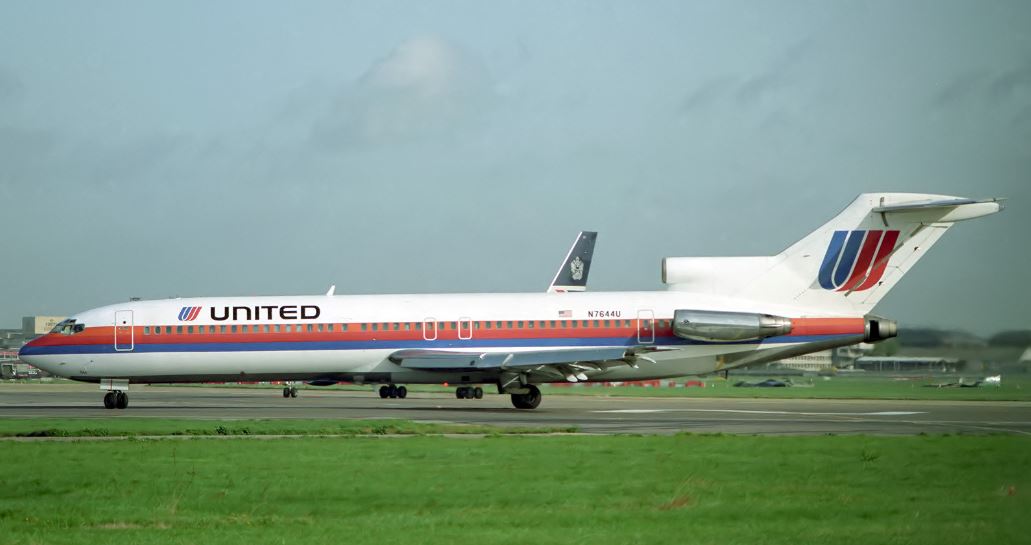
United was joint launch customer for the Boeing 727 (along with Eastern), an aircraft which with little fanfare revolutionised air travel in the world’s largest aviation market. The trijet was the aircraft that all the majors built their fleet around and enabled the massive growth seen from the 1970s into the 1990s as the trunks ballooned and the local service airlines expanded into regional carriers. It also provided much of the capacity for new entrants when deregulation opened up the previously closed market to all comers.
United began to take delivery of its first batch of series 200 727s (N7620U-N7647U) whilst it was still receiving its huge order for series 100s, with six of the latter post-dating the first 727-200 N7620U in May 1968. United took delivery of 28 stretch 727s from May 1968 through till June 1969. It was to be an 8 year wait until they took delivery of further -200s in the form of over 60 Advanced models, which became the mainstay of their medium haul fleet in the 1980s.
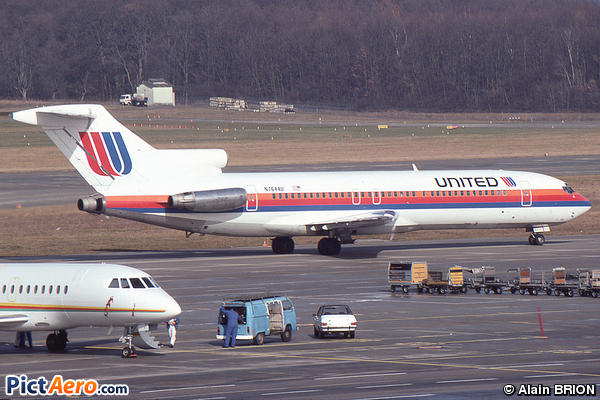
The Advanced models replaced many of the early series 100s however the older non-Advanced series 222s served into the early 90s. Most were sold from 1992-1994, as 757s joined the fleet, whilst the younger Advanced models served well into the 90s and were repainted into the Battleship grey scheme. In fact, the last United 727-200s were not retired until March 2003.
N7644U was one of the last of the non-Advanced 727-222s delivered, arriving in May 1969. She continued in service long enough to receive the updated Saul Bass scheme but was sold to Emery Worldwide in November 1994. Converted to a freighter in early 1995 she operated for Ryan International and Custom Air Transport under the Emery umbrella. She wasn’t finally withdrawn until the end of June 2006 giving her an impressive career of over 36 years – a testament to the 727’s sound and durable design.
THE MODEL
The format for my reviews is to split them into three key areas:
- The mould of the aircraft
- The paint and livery
- Printing and quality control
Each can get a maximum score of 10 for a section giving a maximum combined total score of 30.
THE MOULD
Back in the early days of 1/400 collecting the 727-200 was a popular type to be made and Gemini Jets and Dragon produced a large number of fine tri-jets, mainly representing US airlines. Nowadays Aeroclassics is the only manufacturer left with a 727-200 that actually gets any usage (Gemini still has theirs and it is actually probably the best available but they almost never use it). The nose of this mould is good and although the look is marred by the placement of the cockpit windows it isn’t a mould issue.
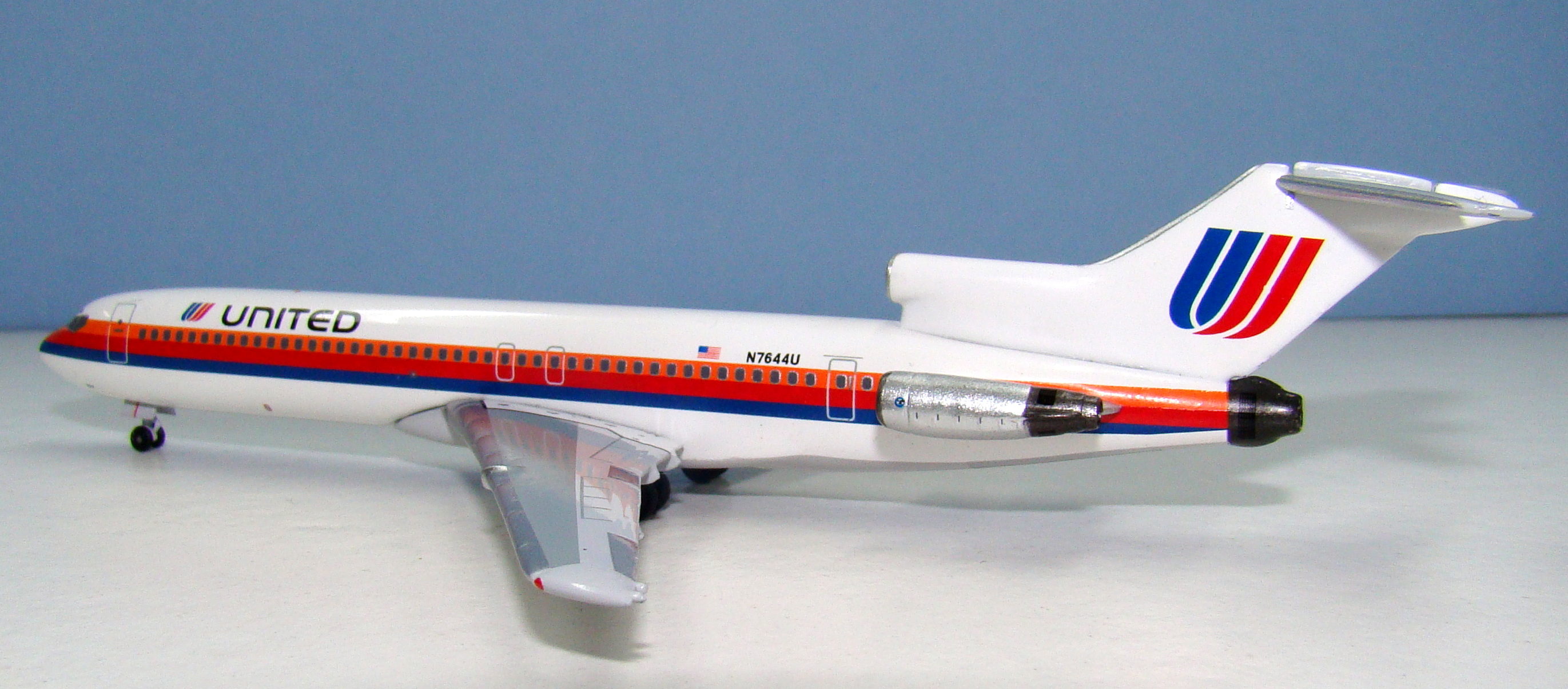
This is a cradle mount mould so without slot in wings there is a seam join between the fuselage and wings. It follows the line of the wing join fairing bulge of the real thing so is quite discrete. At the rear the seam is not visible. It would be nicer if the mould was seamless here, like the Witty one, but I’m not too bothered. The rest of the fuselage and wings are fine.
Criticism of this mould has centred around two aspects – the middle engine exhaust and shape of the vertical stabilizer. The middle exhaust is clearly too large and I am not sure why this has not been remedied since it seems like an easy enough fix.
In fact, for me it is actually the vertical stabilizer which is the mould’s weakest point. Most obviously there is quite an ugly double seam line at the top edge where the horizontal stabilizers of the T tail join. The change of angle of the front edge of the fin is not strong enough and this leads the whole top edge to curve downwards too strongly.
On the plus side the mould has a well detailed rudder and excellent side engines. Whilst admitting that the mould isn’t perfect it is still pretty decent in my opinion. Certainly, its weaknesses are not enough to rule it out for me especially as it is nowadays the only game in town for a whole host of 727s I’m keen to see made.
SCORE – 7
PAINT & LIVERY
The 1990s update to the classic Saul Bass tulip scheme was tasteful and basically allowed for larger titles by shifting the cheatlines lower on the fuselage. It was relatively short-lived as United switched to the, in my opinion, conservative, boring and rather ugly Battleship grey scheme. The grey colours also tended to fade badly and for some reason United massively decreased the size of the Tulip on the tail. I guess someone liked it in Chicago.
Anyway, considering the short life of this aircraft wearing the modified Saul Bass, it was sold in 1994, it is a little surprising that Aeroclassics chose it for this model. An Advanced model 727 would have perhaps been a better choice but regardless this aircraft did wear the scheme and outwardly non-Advanced 727-200s are effectively indistinguishable from their Advanced brothers.
As is regularly the case you could perhaps argue that Aeroclassics has the colours a little too dark but in general they seem to fit the bill. The tulip on the tail and the cheatlines of the fuselage are spot on but in other areas the re-creation of this livery isn’t perfect.
The UNITED titles are ok but both the U and E are too curvy whilst the tulip logo ahead of them has too much space between the blue and orange components (at least on the port side). The silver and grey belly is also wrong along pretty much its whole length. It is too low all the way along. This is especially obvious towards the tail where there ought to be no white between it and the cheatline at the rear. The silver is also not continued onto the wing fairing as it ought to be and in fact rather than having silver, white and grey portions the fairing is just block light grey (annoyingly this was correct on the last Saul Bass 727 Aeroclassics made). The same is true of the middle of the T-tail which is the same grey as the stabilisers. It should be white.
None of the issues with the livery are major and they don’t have a large impact on the look of the model, however they are still a little annoying.
SCORE – 7
PRINTING & QUALITY CONTROL
Printing standards on this model are like the livery application itself a bit mixed. There is some good detail (I especially like the asymmetrical emergency escape exit wing markings), however in other places the detail is lacking. The tail is the most vanilla area. It is basically pure white with no hint of the rudder or panel lines that are quite obvious on the actual aircraft.
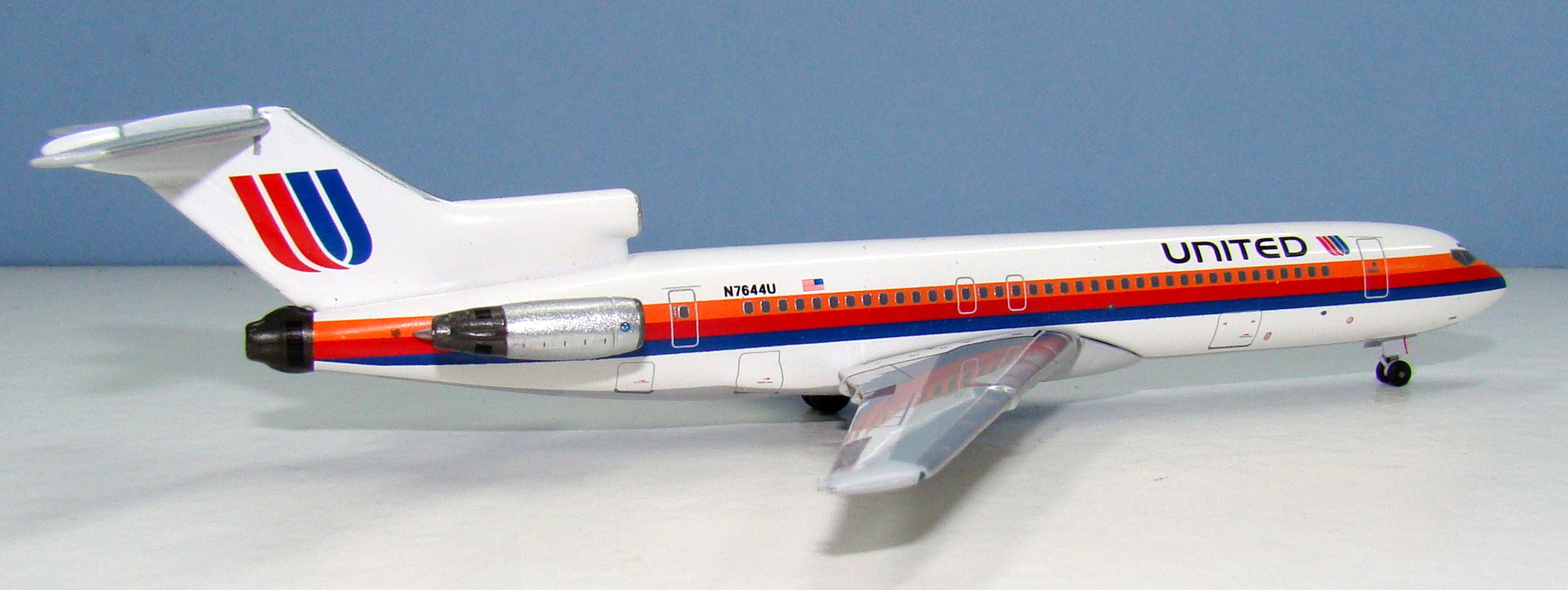
Another area of minor mistake are the windows. The number of windows forward of the emergency exits on both sides is wrong for a non-Advanced model 727. It should not be an unbroken line of windows as on the model. At least one window ought to be blocked out and the spacing to the others of another is non-standard. Ironically the windows as printed are fine for an Advanced 727. On the starboard side of the model the size of the window at the rear most door is incorrect. It ought to be smaller than the standard windows but isn’t.
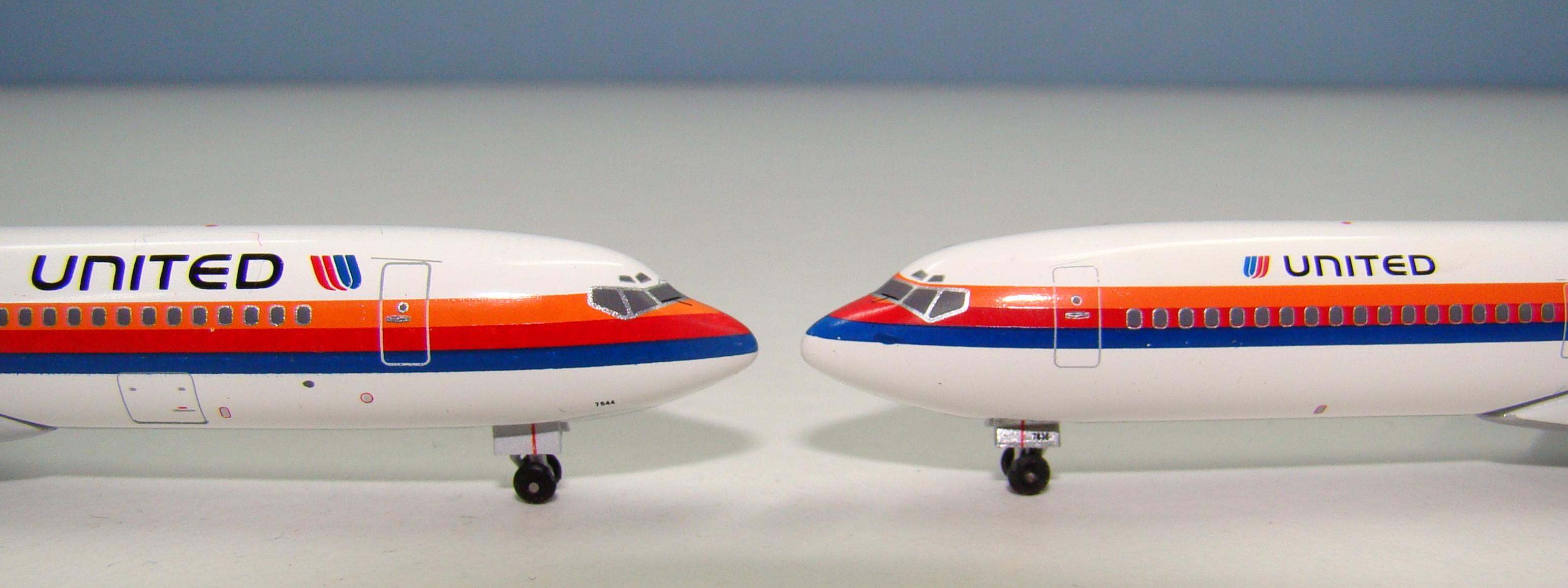
The cockpit windows are another recurring area of concern with many Aeroclassics 727s (though not all). The top edge should be straight but the outer windows are clearly taller than the middle ones. This leads to a stern look on the model which can sometimes look quite poor. This model does have the issue and comparing it to my other United Saul Bass 727 from Aeroclassics (with the small titles) you can see how inferior it looks in this area.
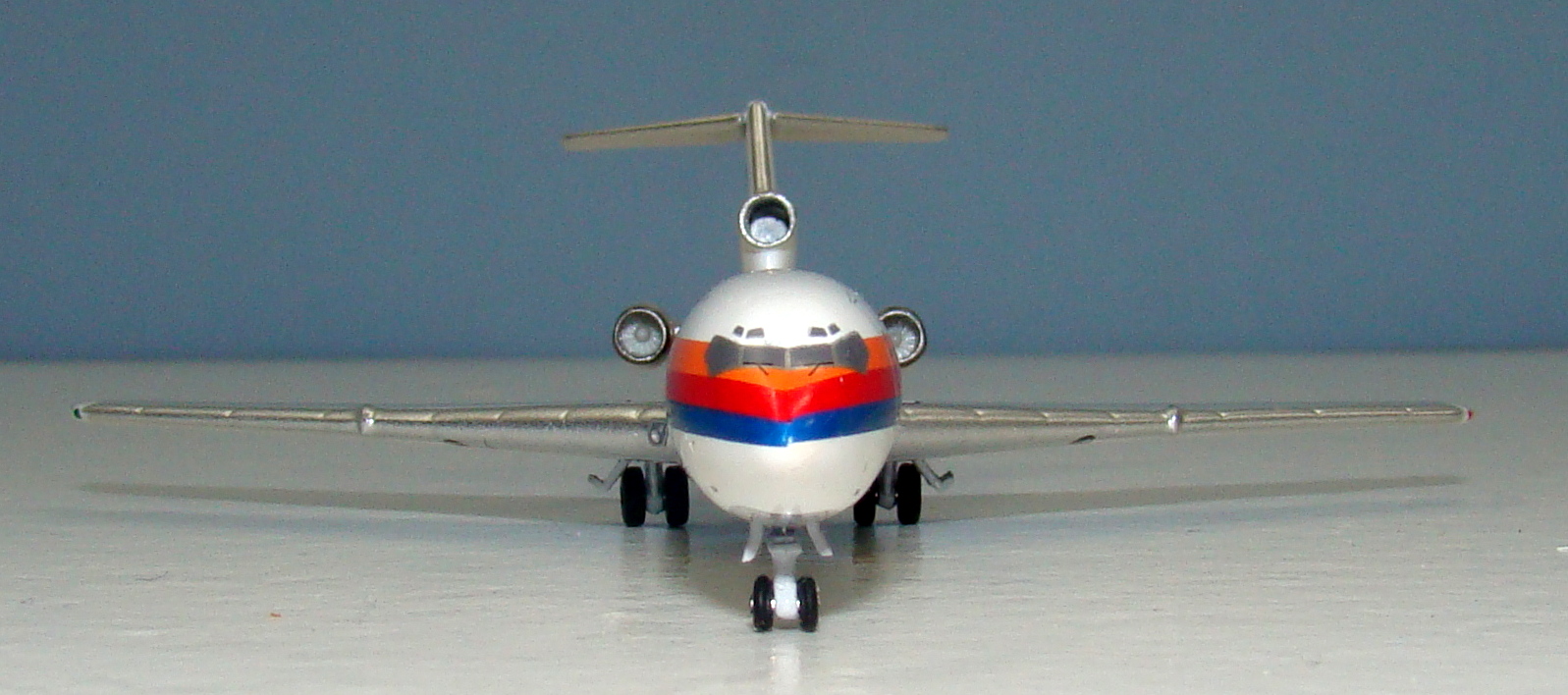
Construction of the model is very good, although it would be nice if Aeroclassics painted the insides of the engines. The fanblades on the numbers 1 and 3 engines remain unpainted plasticky light grey.
SCORE – 7
CONCLUSION
This is a disappointing score for a model that should be a slamdunk for Aeroclassics. It fits well with my other United frames wearing the same scheme but also shows the difference that exists nowadays between Aeroclassics and NG Models, whose 757 wearing this scheme was produced to a higher level of detail. The loss of points here is down to an accumulation of relatively minor errors, which although probably only really bothering nitpickers are things that should be correct.
FINAL SCORE – 21


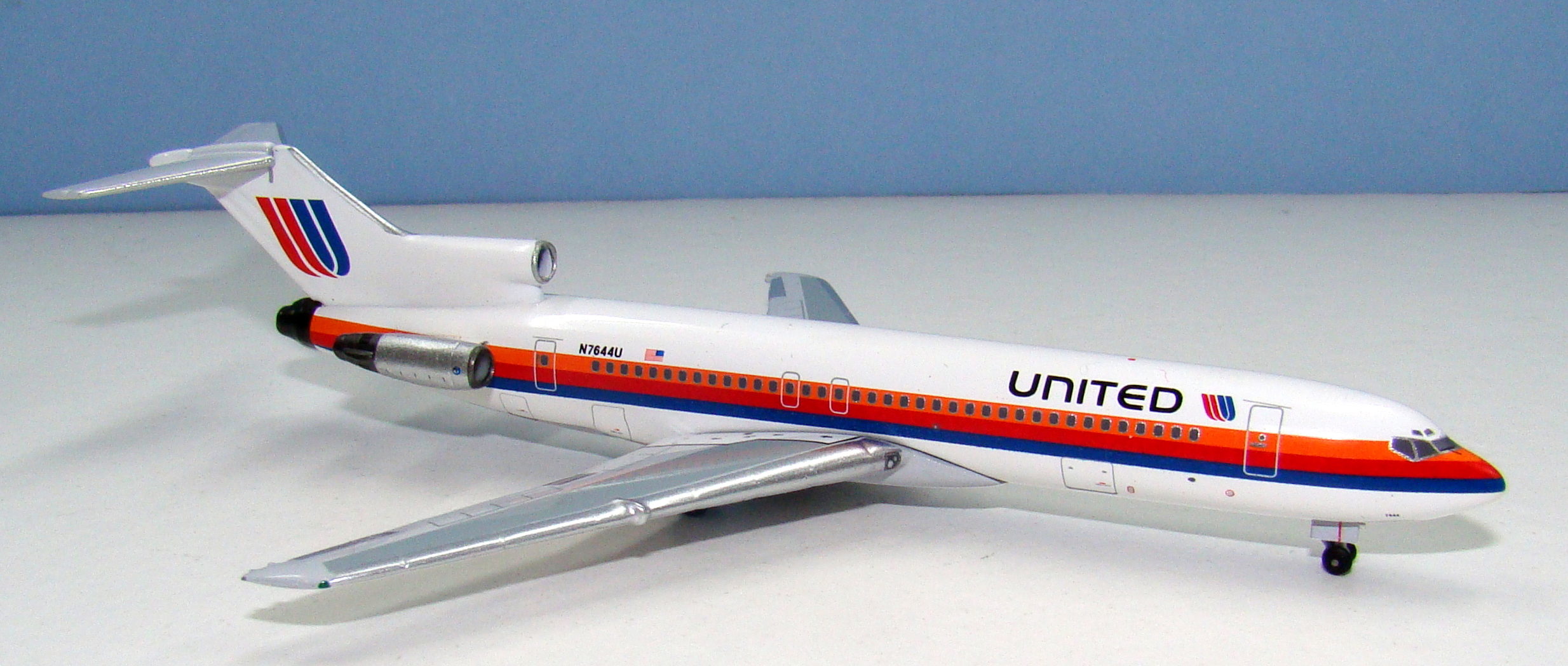

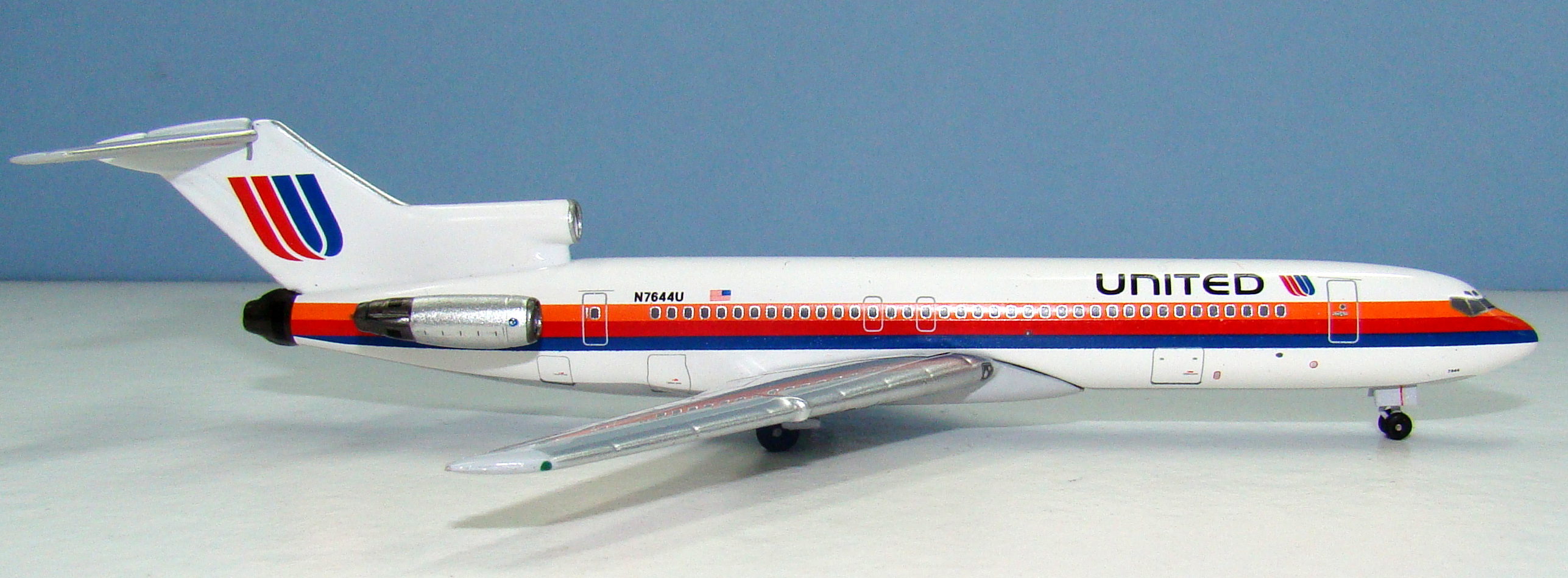
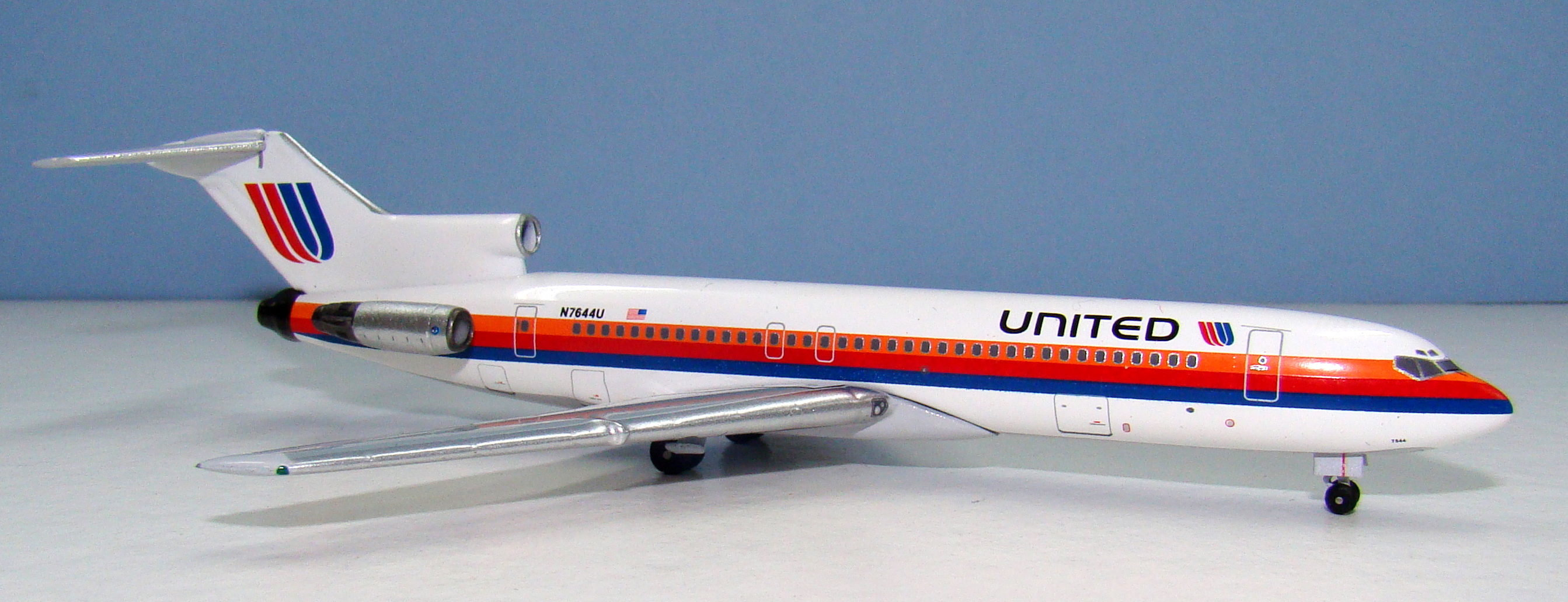

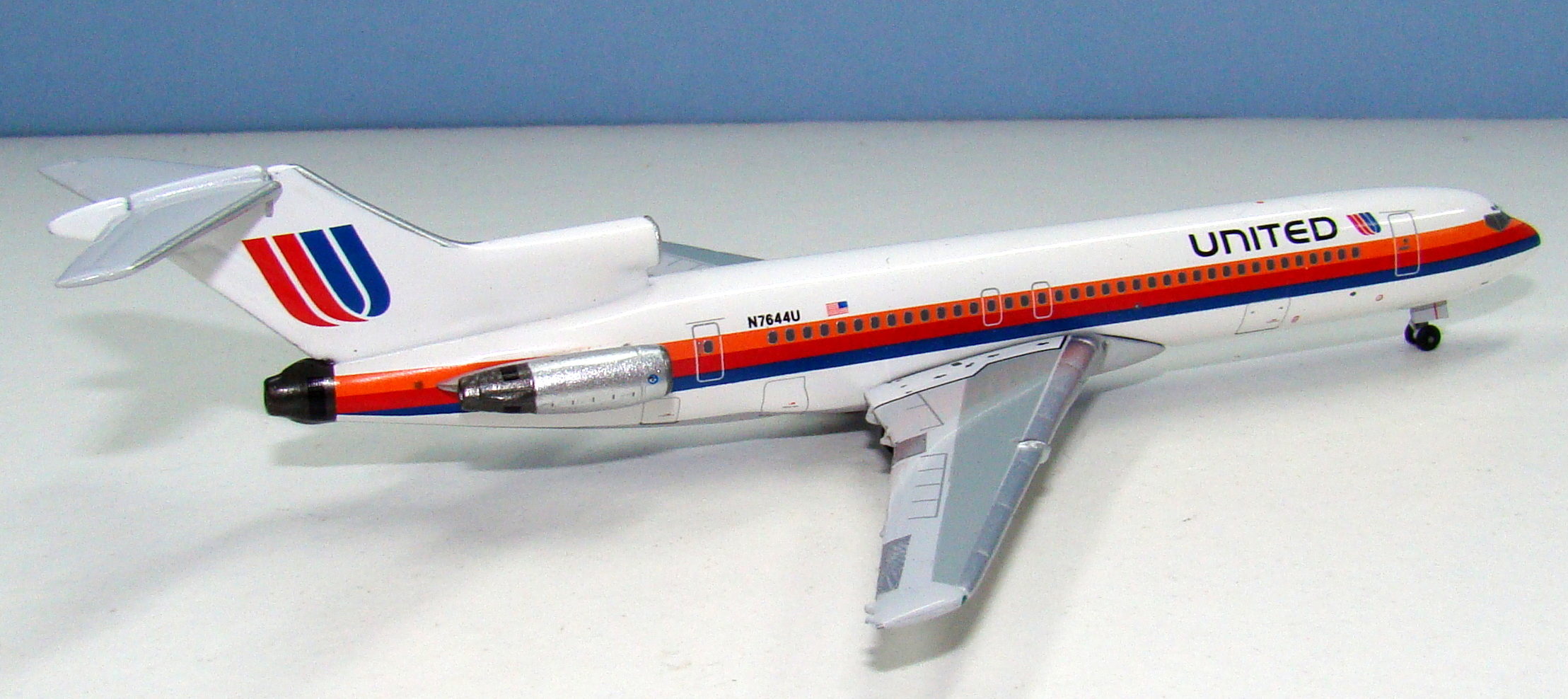
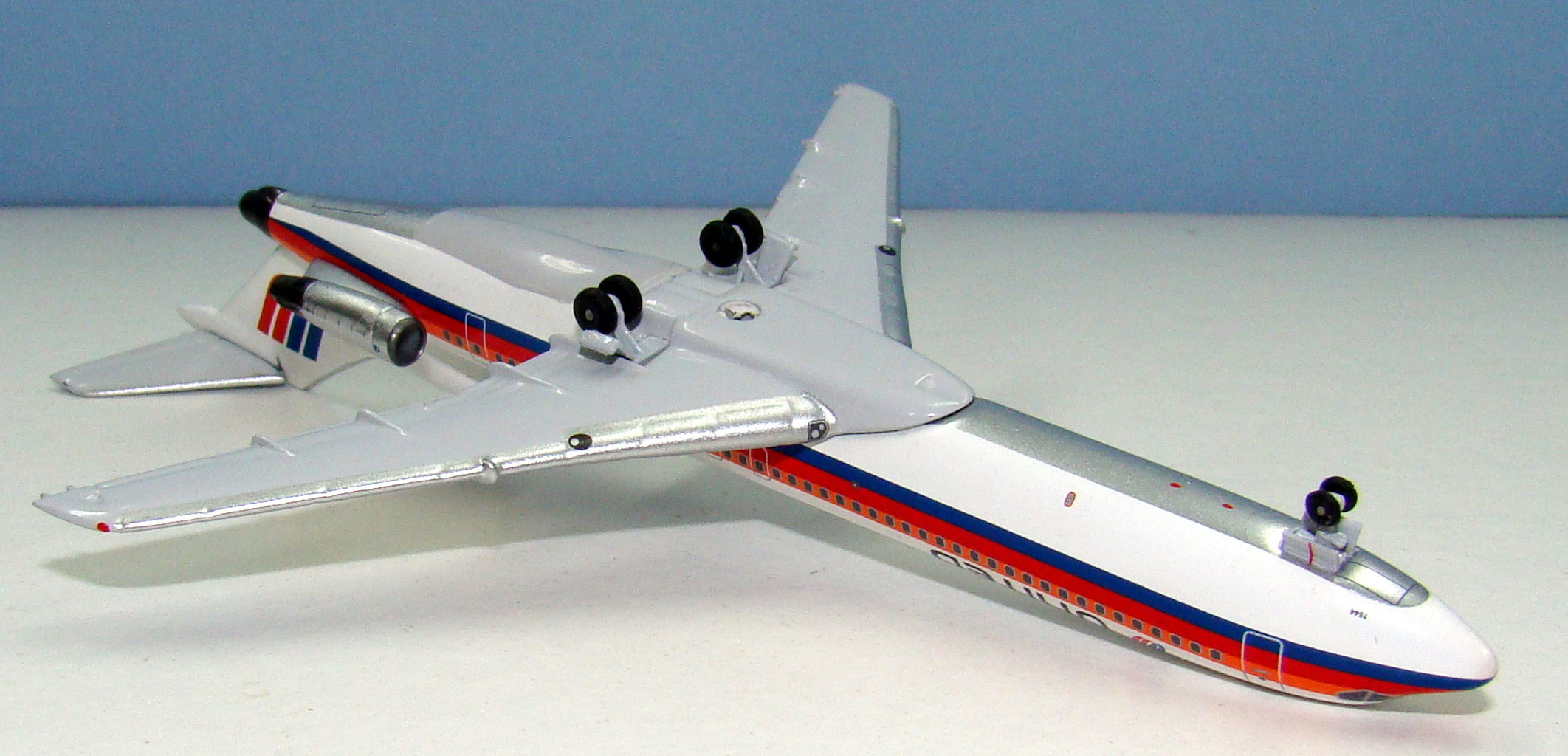
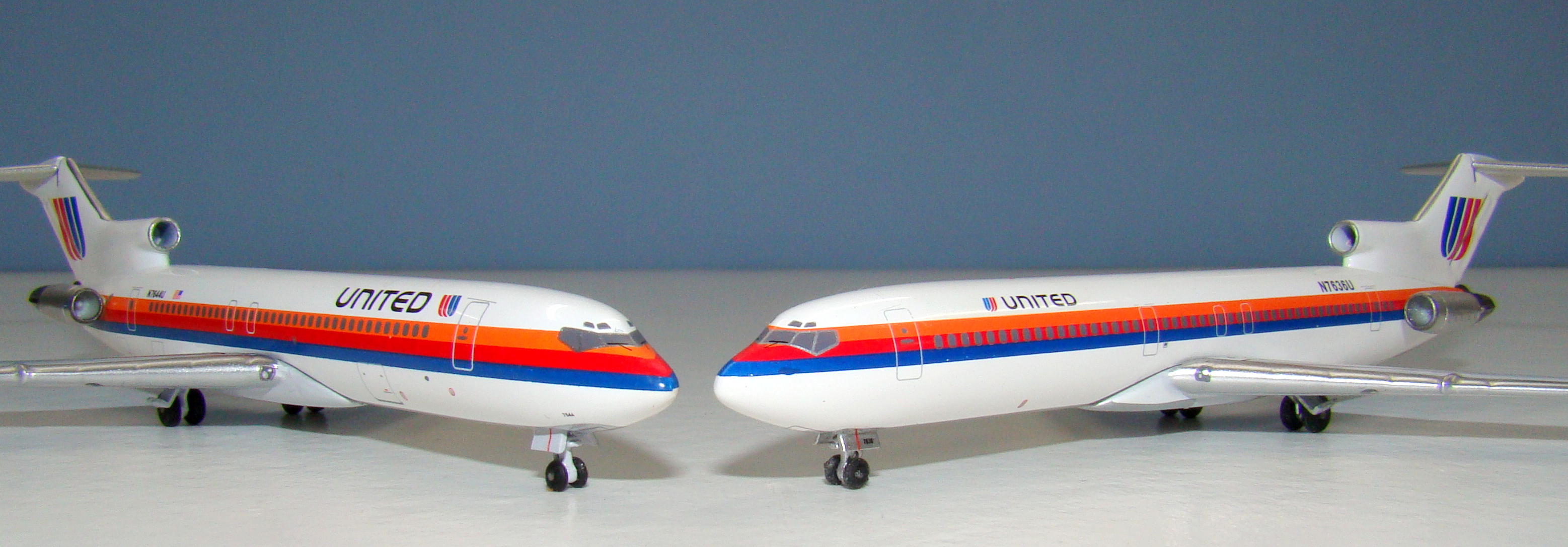
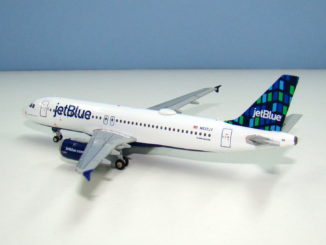
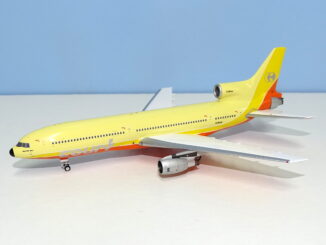
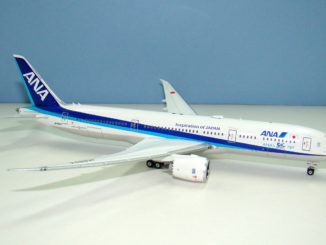
Richard – I was trying to think of a reason why I should replace my Dragon Wings version in this scheme. Now I know why not! Thought you might compare this with the Dragon version that has a superior 7237-200 mould in my opinion.